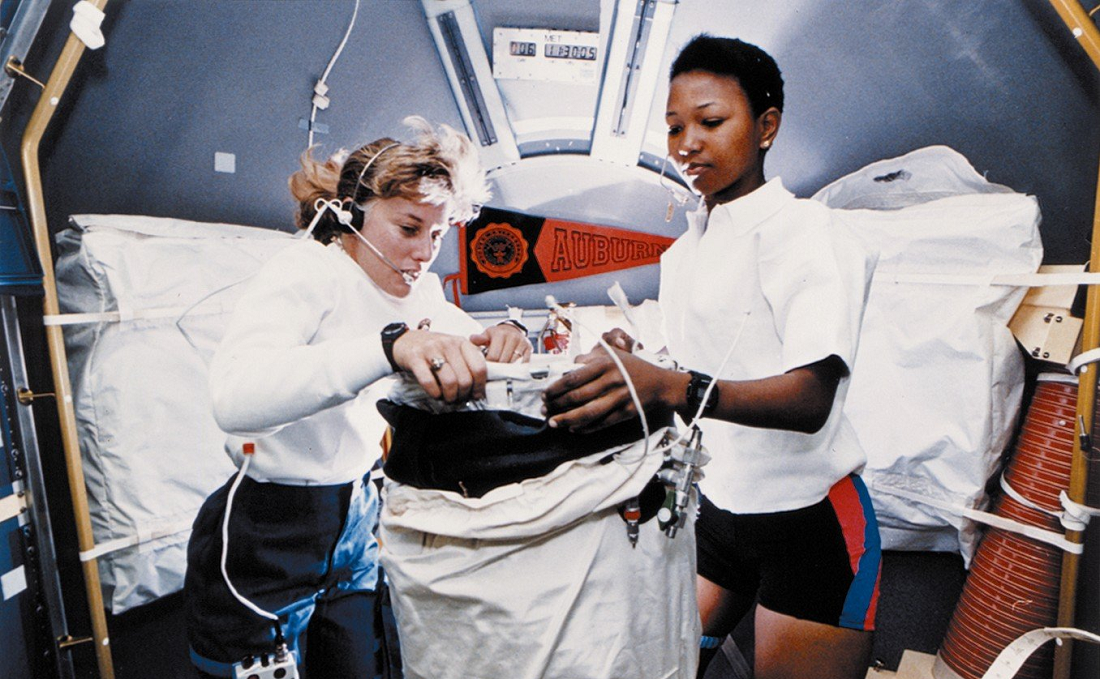Gender, health, and space exploration: A leap for womankind?
In 1983, Sally K. Ride became the first American woman to travel to space with the launch of NASA’s seventh space shuttle mission.
Since then, dozens of women have followed in Ride’s footsteps. While gender equity in space travel has improved over the decades, what health challenges do women space explorers face?
“Studies have shown that when medication is only tested on men, it can present a real risk to women,” said Dorit Donoviel, Ph.D., director of the Translational Research Institute for Space Health (TRISH) at Baylor College of Medicine. “The same goes for space travel. Women going into a pressurized spacesuit that was originally designed for men are at more risk of injuries, particularly if they are out there for long periods of time.”

In fact, the world’s first all-female spacewalk was scheduled to take place on March 29. However, due to issues with the availability of appropriately sized spacesuit parts, the event was canceled.
“Because women’s joints move differently than men’s joints, some women have sustained shoulder injuries in the past due to the spacesuit’s design. Pressurized protective gloves are also known to cause injuries to fingers such as delaminated nails.”
Radiation-induced cancer risk

On Earth, living organisms are largely protected from space radiation exposure. But for deep space explorers, radiation can cause long-term physical health concerns – particularly for women.
“In deep space, on a Mars mission for example, women would be more likely to develop cancer later on in life,” Donoviel said. “Women astronauts have a higher incidence of radiation-induced cancers because they are prone to developing breast and ovarian cancer. The longer they are up there, the more radiation exposure they get.”
Despite these concerns, Donoviel says female astronauts are determined to explore deep space.
“The mindset is, space is risky by nature and by the time they need to worry about those cancers developing decades from now, hopefully we will have figured out a way to manage or decrease cancer risk.”
Mental health and deep space travel
Maintaining psychological health is another potential challenge.
In terms of a Mars mission, humans would be in extreme confinement for essentially 30 months, unable to see Earth. Donoviel says there could also be 40-minute communicative delays between Mars and Earth.
“At TRISH, we are in a position to help NASA think outside of the box to address behavioral health concerns. Helping humans learn how to cope with losing that connection to Earth is something that we are thinking about.”
A 2016 NASA study found that space travel can cause behavioral health disruptions, such as changes in sleeping patterns. So researchers have asked: Are there psychosocial benefits to gender diversity in space travel?
“In general, it is believed that mixed-sex crews tend to be more cohesive than single-sex crews, especially in confined and extreme environments,” Donoviel said. “Women also tend to be smaller in size than men, so if you are going to cram four crew members into a small space, you’ll be able to get more volume if they are smaller in stature.”
Adapting for the future
Researchers at NASA and TRISH are now requiring that space health research projects consider gender differences.
“Our goal is to ensure that the projects we fund take individual differences into consideration. We’ve also brought in an expert to make sure that tools we’re developing are not “one size fits all.”
Donoviel is an associate professor in the Center for Space Medicine and the Departments of Pharmacology and Chemical Biology at Baylor.
-By Nicole Blanton



